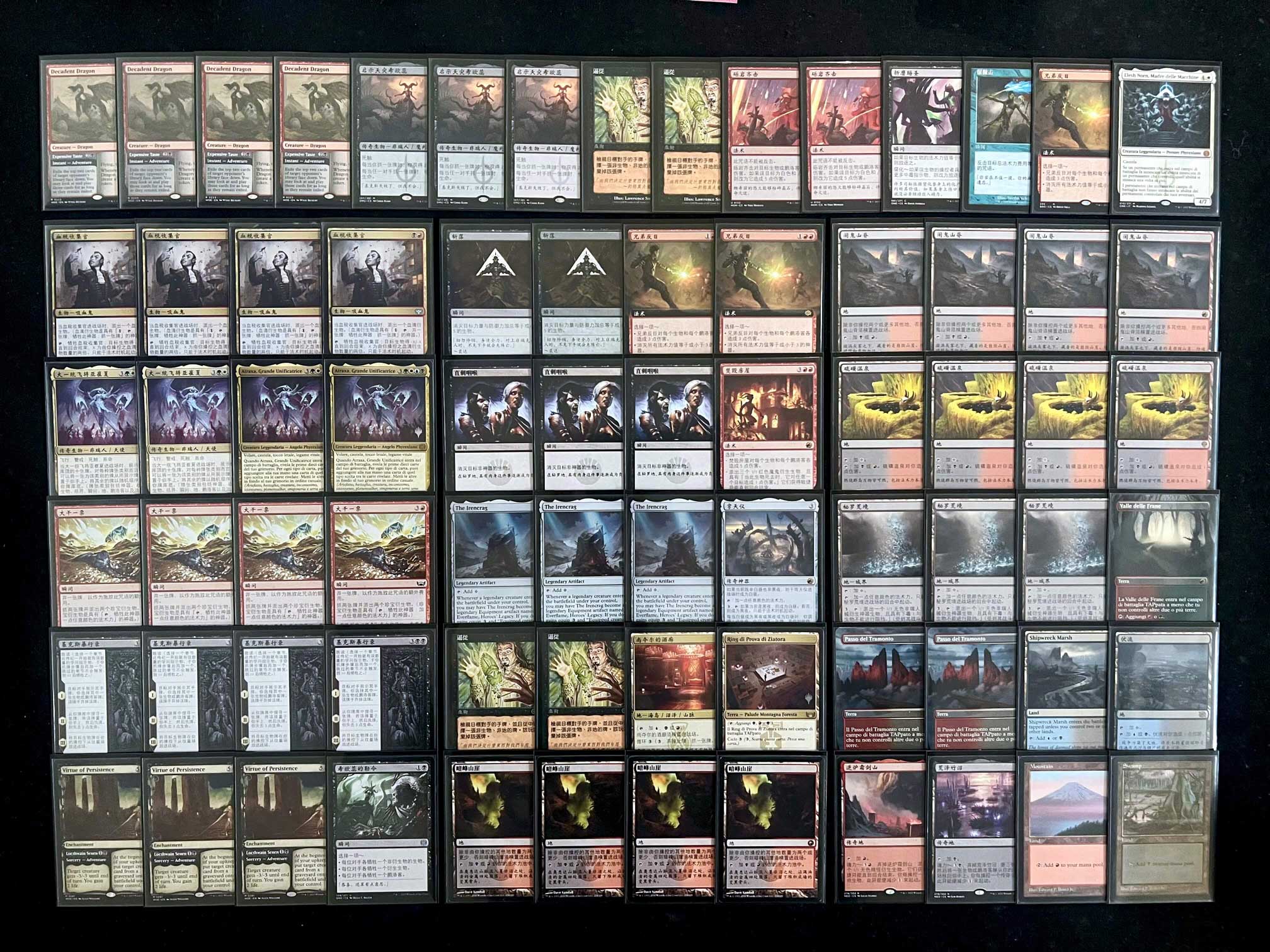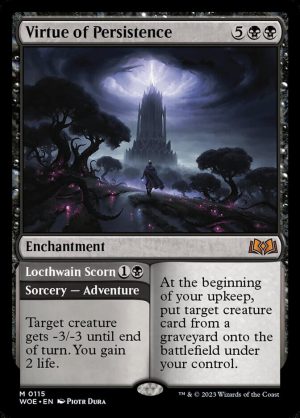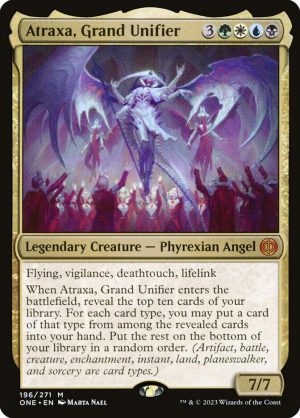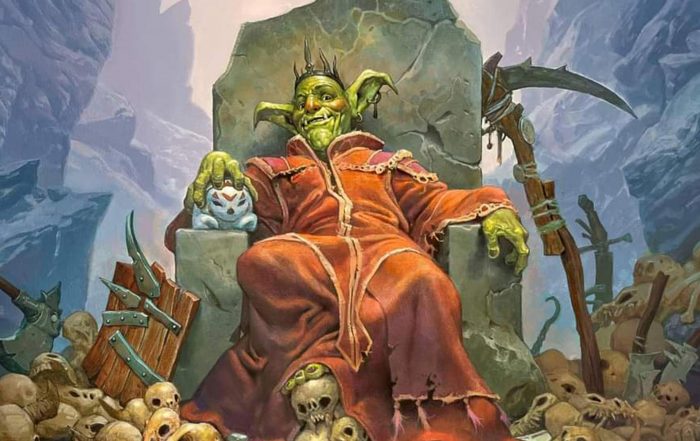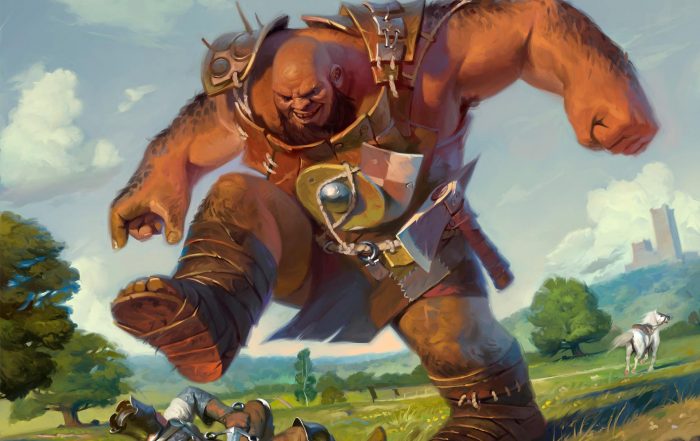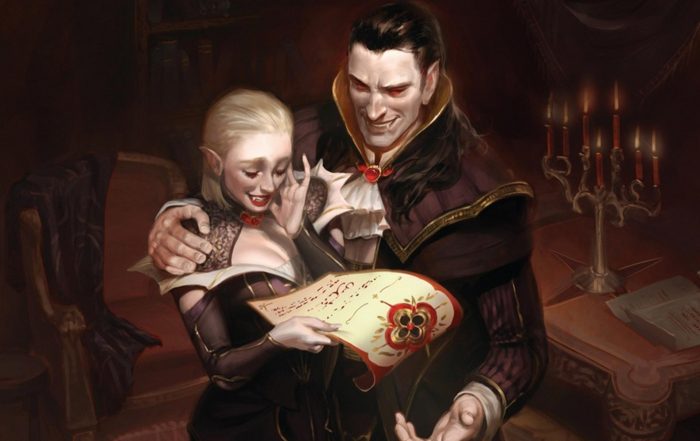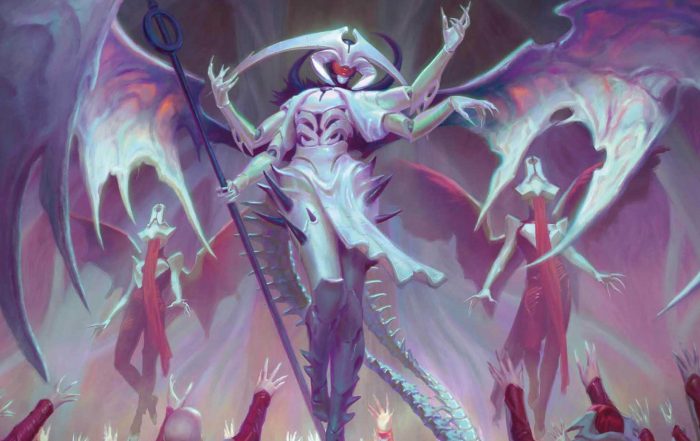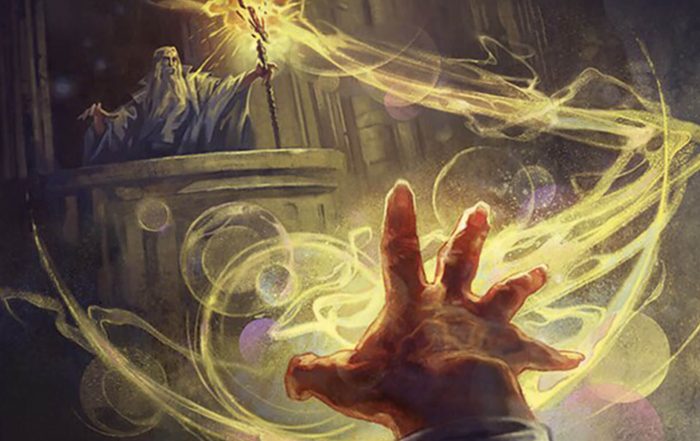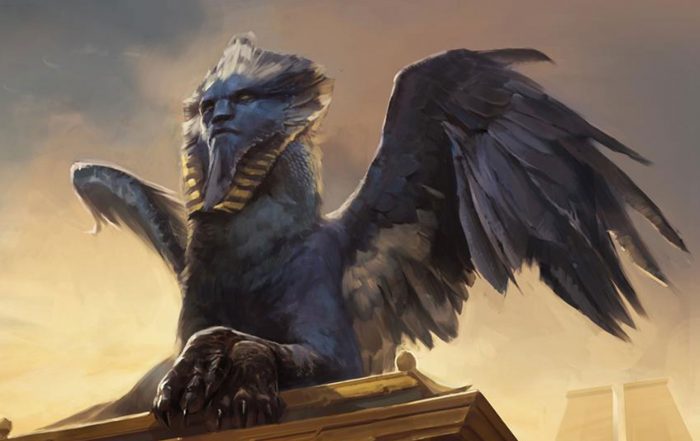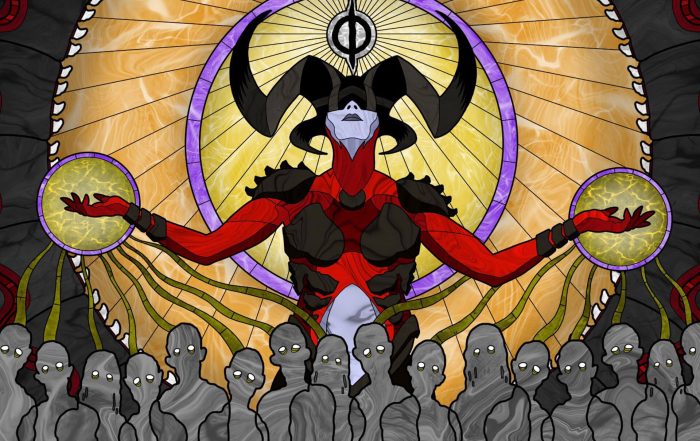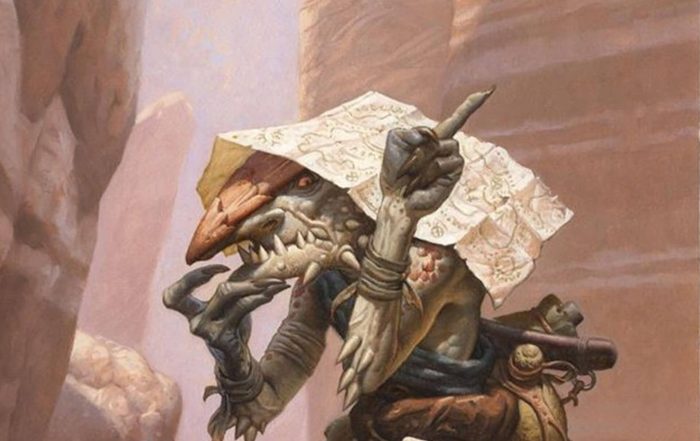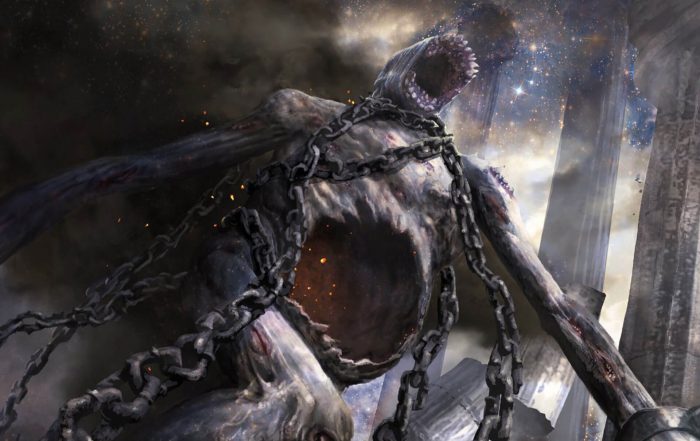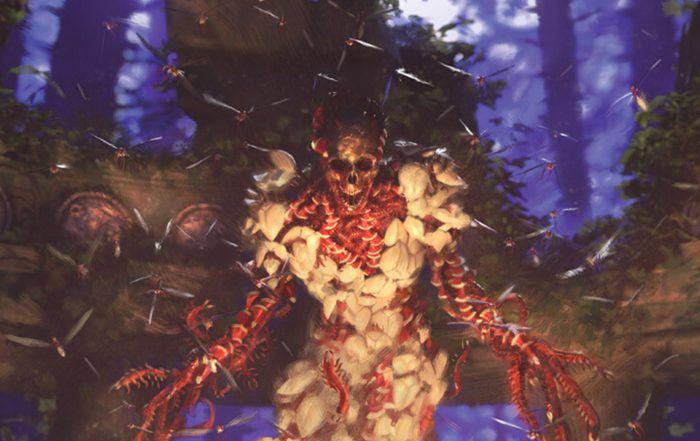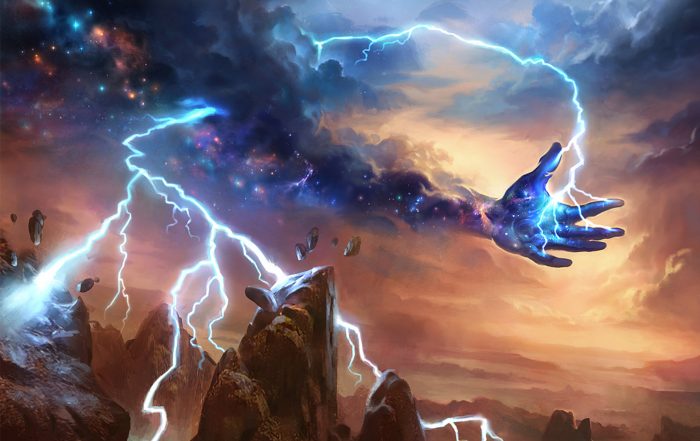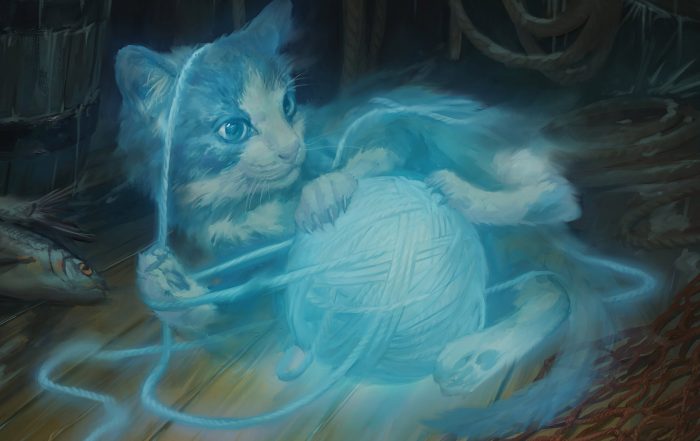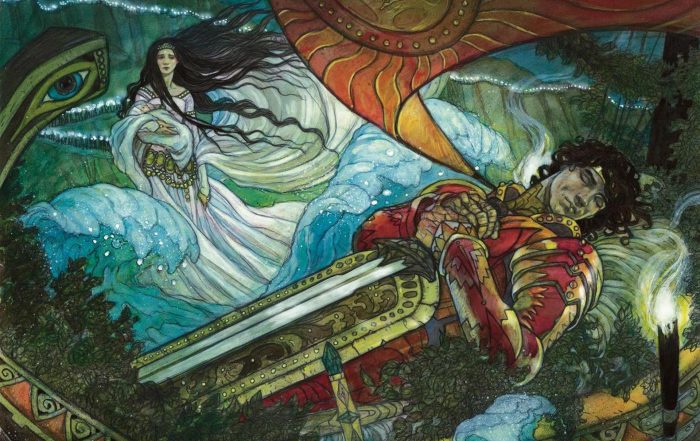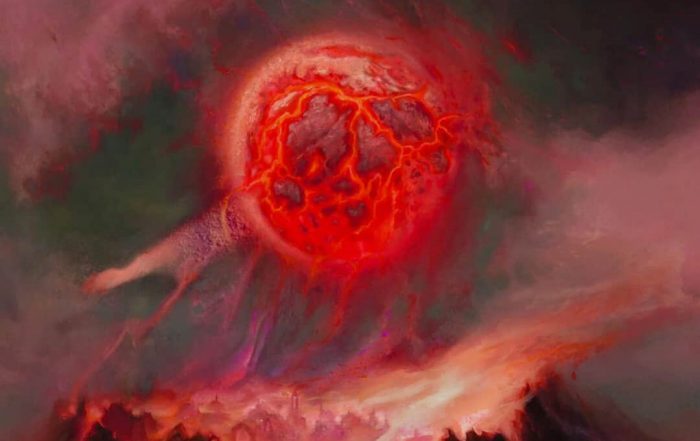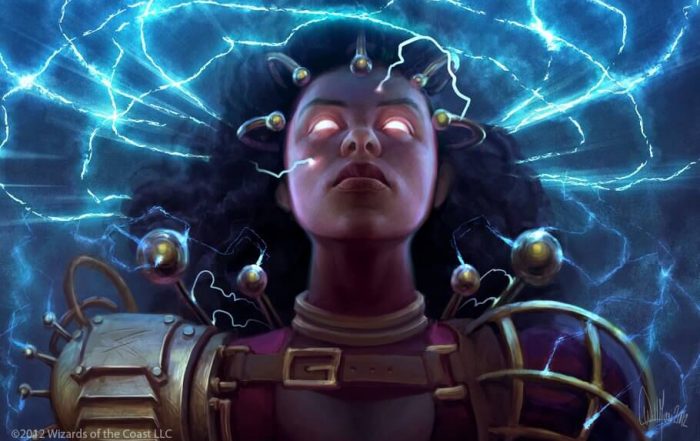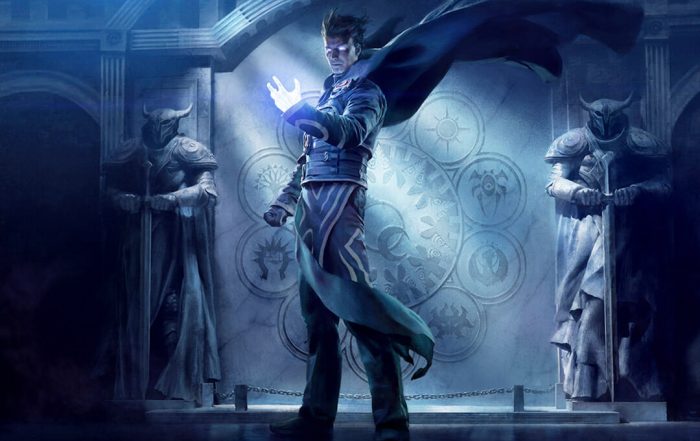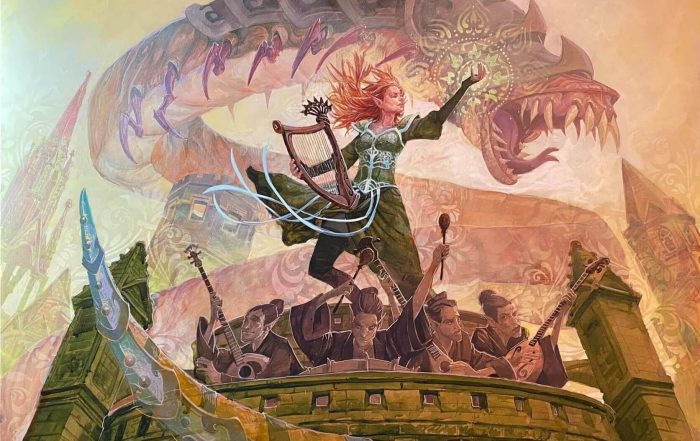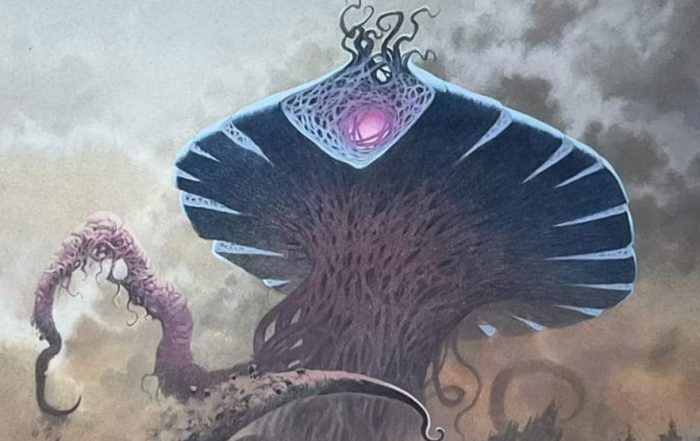World Championships 2023
Rakdos Reanimator Guide
How To Play Rakdos Reanimator
on a high level
Standard Rakdos Reanimator Guide
Author: Zen Takahashi
Hello everyone!
A few weekends ago, I had the privilege of competing at the World Championships, which were held in Las Vegas. With a US$1 million prize pool, this was definitely the most exclusive tournament I had ever played in, and I prepared for it harder than any other event I had competed in before.
Overall, I finished in 34th place. After going 5-2 on day one and finding myself in 15th place, I was hoping for a better result, but ultimately, I am proud of my accomplishment considering how difficult the field was.
In my next article, I will go into detail over my preparation for the tournament, as well as cover the events of the weekend itself, but today, I will instead focus on the Rakdos Reanimator deck that I played to a 5-2-1 result in the standard portion of the World Championships.
Why Play Rakdos Reanimator?
The premise of this deck is to try to go over the top of your opponent with Atraxa, Grand Unifier and Virtue of Persistence. We are aiming to do this as early as turn four, via ramping with The Irencrag, The Celestus and Big Score, or by cheating Atraxa into play with The Cruelty of Gix. On the way to achieving this, we are also looking to interact with our opponents with a combination of cheap, black disruption spells, as well as the red sweepers.
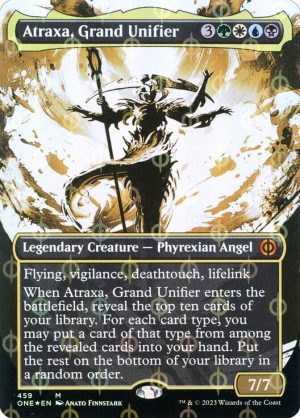
The Reanimator deck is well positioned when going over the top of the rest of the format is a desirable strategy. One significant development to Reanimator from the previous standard format were the bannings of Reckoner Bankbuster, Fable of the Mirror-Breaker and Invoke Despair, which meant that the midrange decks were now looking to win via creatures, Wedding Announcement and planeswalkers.
This change in the midrange decks’ threat base led us to believe that the best way to handle them was with the red sweepers (Brotherhood’s End and Burning Down the House), which also overlapped with how we wanted to fight against the aggro decks in the format, where cheap sweepers have historically been well positioned.
The banning of Invoke Despair also meant that The Cruelty of Gix became better as well, as we could now play it on chapter one or two to get the full value out of the card and there were fewer ways to punish us for it.
The weakness of Reanimator is essentially counterspells – trying to resolve Big Score or a seven-mana card through a counterspell is difficult. We found that this new version of Reanimator struggled even more against counterspells than the previous version, as it’s very linear and all-in on going big.
After trying various plans for post-board games, we discovered Decadent Dragon, which was the major breakthrough for us.
The card was incredible against any midrange decks, and our manabase also allowed us to cast our opponent’s spells fairly consistently.
This led to our transformational sideboard plan against blue midrange decks, where we sideboard out our “big” package, and become an interactive, value-generating midrange deck in the post-board games.
This is the key area where we believed Domain Ramp and Reanimator differed the most – Domain Ramp may have been better at going big, but it didn’t have an effective plan to fight through counterspells other than hedging on cards like Thrun, Breaker of Silence or Tyrranax Rex and hoping they don’t have Sunfall, or going even bigger with cards like Invasion of Alara, which then made you weaker to the decks on the faster end of the spectrum.
On the flip side, Reanimator actually had a genuine plan against these decks with its sideboard plan. It is worth noting, though, that in retrospect, I believe this was wrong, as Up the Beanstalk was an excellent addition to the ramp decks to help battle through counterspells.
Unfortunately, by the time we discovered that, we were all locked in on Reanimator.

Finally, the deck also just gained many powerful cards from Wilds of Eldraine. The Irencrag helps the deck become smoother and enables the turn four Atraxa, Virtue of Persistence is excellent in this deck as it’s a cheap interaction spell early in the game while being a win condition later in the game, and Decadent Dragon, as mentioned before, helps us with our midrange transformation plan.
Gameplay Guide
In pre-board games, you want to be as linear as possible and try to go “big” as quickly as you can while you interact with their board on the way there.
This deck is different to Reanimator from the last format – it plays out more like a traditional ramp deck than a midrange deck that has the option to go bigger.
Ideally, you want to be resolving Atraxa, Grand Unifier on turn four or five. The two main pathways to get there are either to ramp into her via The Irencrag and/or Big Score, or interact with their board with disruption spells and set up a discard outlet alongside The Cruelty of Gix. You can also do a combination of the two e.g. interact on turn two and three with disruption spells, play Big Score on turn four, and resolve an Atraxa on turn five.

You generally want a turn two play, especially if you are on the draw. You want that play to be relevant for that matchup, or be The Irencrag, which will help you get ahead on mana.
Your turn three and four plays are usually a combination of interacting with them and undertaking some kind of setup (Big Score and/or putting an Atraxa into the graveyard), so that you can set up Atraxa, Grand Unifier on turn five. If you don’t have a four-mana spell in hand, you’d often play a turn two Bloodtithe Harvester into a turn three The Irencrag plus a removal spell.
Remember, you cannot play The Irencrag into Bloodtithe Harvester on turn three due to the mana requirements.
You often want to cast Big Score on your main phase, as you can then cast sorcery-speed interaction with the treasures. Also, against any deck with counterspells or Faerie Mastermind, you want to cast Big Score on your turn if they tap out at any point.
Generally, exchanging resources one-for-one is good for you, as you can then recoup the card advantage later with cards like The Cruelty of Gix, Atraxa, Grand Unifier and Virtue of Persistence. An issue though is when your interaction either doesn’t trade efficiently (Cut Down vs Domain Ramp) or they can stop our mechanisms to recoup on cards (counterspells against your big cards).
Our solution to the former is to loot away the ineffective interaction, and the solution to the latter is a combination of overloading on must-answer cards, attacking from different angles (Mirrex is key for this) and/or making their counterspells redundant via having more mana (try to blank their Spell Stutter or Make Disappear). This plan also works better post-board as Decadent Dragon does all three quite well.
If possible, you want to keep the board relatively clear. This is especially true versus the creature decks, as they can start generating momentum if you don’t keep their board clear.
You have to think carefully about how you want to sequence your land drops. You want BR on turn two for Bloodtithe Harvester, double red on turn three for Brotherhood’s End, and 3UGWB for Atraxa, Grand Unifier on turn seven. Against matchups where Cut Down is important, you also want an untapped black source on turn one.
If you are looking to ramp into Atraxa with Big Score, remember that Big Score makes two treasures, so assuming that you have a black source readily available, you do need one other mana source that can generate either blue, green or white (the two treasures can account for two).
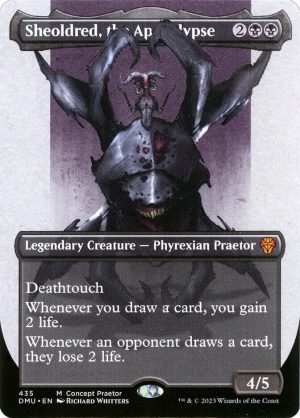
The post-board plan generally involves interchanging the interaction spells to be better suited in the matchup, and if they are a disruption heavy deck, we reposition ourselves to be a more grindy, midrange deck off the back of Decadent Dragon and Sheoldred, the Apocalypse. This may slow down our linear gameplan, but makes us better equipped to fight our opponent’s disruption – whether it be discard spells or counterspells.

Hands To Keep
In pre-board games, we are quite linear, so we want to generally have some path to resolve an Atraxa, Grand Unifier on turn four or five – either via Big Score or The Cruelty of Gix. However, we also have a decent amount of card filtering and our other cards are generally interactive spells that buy us time, so most hands that have enough lands and spells are a keep.
We don’t want to keep two land hands on the play unless we have Bloodtithe Harvester or The Irencrag. The deck is mana hungry, and we also no longer have Fable of the Mirror-Breaker to “fix” our draws if we hit a third land.
We ideally want to keep hands with a turn two play. On the draw, I would seldom keep a hand without a turn one or two play, unless it’s a specific matchup like Esper Control where I don’t need to interact early.

It’s okay to have slightly awkward hands if you have a discard outlet, as we can use them to smooth it out. However, we’ll often mulligan hands where we have two cards that we want to discard but either have zero or only one discard outlet in hand.
The hands you mulligan are generally those with not enough mana or too much mana, or too many clunky cards without a way to filter them e.g. multiple Atraxas in hand. If you mulligan, you generally want to keep land-heavy hands. Blood tokens and Big Score let you filter through excess lands, but if you miss your early land drops, it’s hard to get going.
Playing with Cruelty of Gix
Before Invoke Despair was banned, the presence of the card meant that The Cruelty of Gix was cast for its third chapter most of the time.
However, it’s now common for us to cast the saga at chapter one or two to get more value out of it.
If you have a Big Score or Atraxa, Grand Unifier in hand, or a blood token in play, with chapter two you can find the missing piece (either an Atraxa or a Big Score), and then discard the Atraxa at instant-speed before you hit chapter three on the following turn.
If you are not being pressured on the board, and you’re not worried about The Cruelty of Gix being removed, it’s often better to start the Cruelty at chapter two to fetch a card you want, and then return Atraxa the following turn. This way you get the card you were looking for instead of relying on finding it with the Atraxa, plus you get to reanimate Atraxa with open mana, so you can cast the spells you find off her straight away.
Be aware of the three life you lose on chapter two, and against decks like Mono Red, you actively never want to cast it on chapter one or two (casting it on chapter one will still lead to three life being lost the following turn).
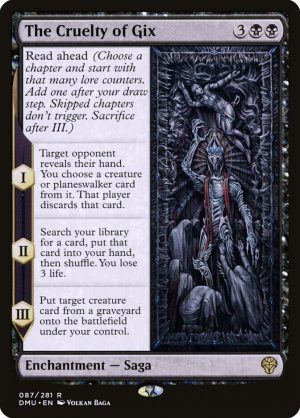
1. Against decks like Domain Ramp or Esper Control, a common play is to resolve a Cruelty on chapter two then fetch a Duress to cast on the same turn, or fetch a Disdainful Stroke and hold it up.
2. Against decks like Domain Ramp or Esper Legends, you often want to cast Cruelty on chapter one to take a creature of theirs, and then on the following turn at chapter two fetch another copy of Cruelty, and cast it at chapter three to get back the creature you discarded. This is especially great versus the ramp decks as you both disrupt them and get a big creature on your side in one turn-cycle. However, when taking this line, be careful of Takenuma, Abandoned Mire, which can fizzle you returning their creature.
3. Against decks like Golgari Midrange or Esper Midrange, where the board state varies from game-to-game, I often like to start Cruelty on chapter one because it also helps inform me what I want to fetch with chapter two.
Tips and Tricks

- If you are playing this deck in paper, you need to play quickly. The games in this standard format tend to go long, and often games with this deck can drag out if you’re playing against a midrange or control deck.
- Always hold priority in your draw step if you have The Cruelty of Gix in play that is about to hit chapter three. This gives you a window to draw for your turn, and then still loot before you go to your main phase and the Cruelty triggers. Once you go to your main phase, it’s too late, as the Cruelty trigger goes on the stack, and you have to select a target in the graveyard.
- When you are sideboarding with this deck in paper, try to conceal how many cards you are sideboarding in. If you sideboard in a lot of cards, especially in an open decklist event, they will immediately know that you’re transforming into the midrange plan, and they can sideboard accordingly. If your opponent ever sees you sideboarding out twelve or thirteen cards, it’s pretty obvious that you’re boarding out the reanimator package.
- The three life you lose on The Cruelty of Gix is not trivial, especially if you are looking to chain multiple copies together. Therefore, try to be careful about managing your life total and minimise taking damage off your painlands. The Celestus, Virtue of Persistence and Atraxa, Grand Unifier can help gain back some life.
- You generally do not want to sacrifice away your blood tokens unless you are looking for a specific card, or you’re missing land drops. Having blood tokens in play lets you put an Atraxa into your graveyard later, or help kill a bigger creature if you draw another Bloodtithe Harvester. Many decks in standard also have some kind of sorcery-speed exile effect (Graveyard Trespasser, Lord Skitter, Sewer King etc.), so in many matchups, it’s an active liability to discard your Atraxa early.
- The way you play with Duress depends a lot on the matchup.
For example, against Mono Red, if I am on the play I like to cast it on turn one to try hit a Kumano Faces Kakkazan, but on the draw, I like to hold it for as long as I can to maximise the chance of hitting a Twisted Fealty. Against decks with counterspells, I generally want to hold it to use it as a “protection” spell for the turn I want to resolve something big, but I may also cast it earlier if I need to hit a Kaito Shizuki or a Wedding Announcement because I’d lose to these cards otherwise.
- You want to hold Mirrex in hand, as it can help fill in for the missing colour you need to hardcast Atraxa, Grand Unifier, or a card you may have exiled from your opponent with Decadent Dragon. However, against control decks, you want to play it on turn four and start making Phyrexian Mite tokens as quickly as you can.
- The combination of Bloodtithe Harvester or Virtue of Persistence alongside Cut Down or Brotherhood’s End can help remove a Sheolded, the Apocalypse (or any similar-sized creature) from play.
- Once you have enough mana in play, you can flip The Irencrag and turn it into an equipment. Making 4/4 Mite tokens with Mirrex or turning Atraxa into a two-turn clock (a ten-power creature) can be relevant.
- The devil tokens from Burn Down the House have haste. You seldom cast it for this side, but sometimes you can finish off a planeswalker on low loyalty with some hasty tokens.

Matchup Guide: Esper Midrange

You generally want to keep their board clear, as their creatures are powerful and tend to snowball. In particular. Raffine, Scheming Seer and Sheoldred, the Apocalypse must be removed on sight.
If you are not under pressure, starting The Cruelty of Gix at chapter one is ideal, as they have many powerful creatures you can hit. Then at chapter two, you can either fetch a sweeper to deal with their board, or grab another copy of Cruelty to get back a creature. For this reason, conserving your life total is important in this matchup so that you don’t die from the life loss from Cruelty.
If your opponent has a Dennick, Pious Apprentice in play that is preventing you from reanimating, you can play Cruelty at chapter two and find a removal spell, and then on the following turn remove the Dennick before you hit chapter three.
Be careful of Otawara, Soaring City bouncing your Cruelty or Takenuma, Abandoned Mire fizzling your Cruelty if you try to reanimate their creature.
Matchup Guide: Domain Ramp

The pre-board games are about who can resolve an Atraxa, Grand Unifier first.
Both decks are quite consistent at doing so on turn five, so play/draw matters a lot. However, I do think we have an edge here as we can disrupt them with chapter one of The Cruelty of Gix and can also get Atraxa into play on turn four.
It is quite common to cast The Cruelty of Gix for chapter one to take their Atraxa or Etali, then at chapter two fetch another copy of the saga and cast it at chapter three to immediately get back the creature you discarded the prior turn. I especially like this play if you have the second Cruelty of Gix in hand already, as then you don’t have to worry about Leyline Binding.
In post-board games, you often start Cruelty at chapter two to grab Disdainful Stroke or Elesh Norn, Mother of Machines. They generally have a very difficult time winning if you can resolve an Elesh Norn.
You want to hold a sweeper effect for Herd Migration.
Don’t expose your graveyard to their Virtue of Persistence by discarding Atraxa early. However, they will likely board out their Virtues in post-board games.
Matchup Guide: Golgari Midrange

Although it depends on their list, most Golgari decks don’t have many ways to deal with The Cruelty of Gix in pre-board games. Therefore, you often want to start it from chapter one to maximize its value. Post-board, you generally cast it at chapter three straight away, as they have Tear Asunder.
If the game goes long, you’re heavily favored, so it’s really important to conserve your life total and stop their early aggression. I’m happy to aggressively kill Mosswood Dreadknights early, as them taking a turn off to draw a card with it is great for you. I also happily chump block a Sheoldred, the Apocalypse or Restless Cottage with a Bloodtithe Harvester to conserve my life total.
If you’re going to kill a Mosswood Dreadknight, either do so at the end of their turn, or on your main phase, so that they have just a one-turn window to re-cast it.
Don’t expose your Atraxa, Grand Unifier to Lord Skitter, Sewer King or Restless Cottage. Try not to discard it until the turn you reanimate it with The Cruelty of Gix.
I like to cast the removal side of Virtue of Persistence as quickly as I can, so that it’s out of my hand, and it’s safe from Duress/Liliana of the Veil.
The enchantment side of the card is game winning in this matchup if they don’t have an answer to it.
Matchup Guide: Mono White Aggro

You can kill Adeline, Resplendent Cathar with Cut Down if they have no other creatures in play. Be careful of them activating Mishra’s Factory in response, though.
If you have a Cut Down in hand and want to remove their Mishra’s Factory, make sure to do it before they go into combat if they have another copy of the land, as otherwise they can then pump it in response and fizzle your spell once you let them attack.
Matchup Guide: Esper Control
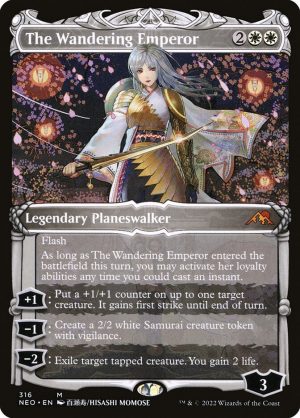
IN
+2 Duress
- Getting an active Mirrex as quickly as you can is key. Once you have two copies going, it’s very difficult for Esper to beat it, especially in pre-board games.
- Counterspells are the main cards you’re concerned about from them. You want to hold Duress for a key turn where you want to resolve a big card.
- If you are going to cast a card into a counterspell, you want to do so on turn four instead of turn three, as that is their Wandering Emperor/Memory Deluge turn.
- Decadent Dragon is good for baiting out counterspells on their end step. If they let it resolve, we are good at casting most of the spells in their deck.
- Don’t attack your Sheoldred, the Apocalypse into their Wandering Emperor.
- The red sweepers are good for dealing with The Wandering Emperor and her tokens.
- Kill Chrome Host Seedshark on sight. Similar to Monastery Mentor from days gone by, you don’t want to let them untap with it. Note that Brotherhood’s End can deal with incubate tokens with its artifact-destroying mode.
Matchup Guide: UW Soldiers

- Use your removal aggressively and try to keep the board clear. Their deck’s strength largely comes from building critical mass on the board, so stopping from growing a big Regal Bunnicorn or casting a Knight-Errant of Eos for free is key.
- Try to play around Zephyr Sentinel as much as you can. Don’t let them counter your Virtue of Persistence with it.
- Big Scores are quite bad in multiples in this matchup, so feel free to loot them away.
- I like to cast Duress early in this matchup because you’re just looking to hit their counterspells, which they have so many copies of and they’re all functionally the same. Instead, I want to try to be as mana efficient as possible in this matchup.
Conclusion
I hope you enjoyed this article as I went over in-detail the Rakdos Reanimator deck I played at the World Championships! As I mentioned at the beginning, my next article will be a tournament report on the World Championships – a mixture of Magic strategies and stories from the testing house during the week leading up to the event, as well as the tournament weekend itself!
Till next time!
Zen Takahashi
About the Author
Zen Takahashi is a seasoned writer and mainstay on the Three for One Trading writing team. He is an avid Eternal player from Auckland, New Zealand and enjoys competing in local Legacy events and playing Old School over webcam with friends.
Previously, he was a Silver Pro for multiple years and his results included five Grand Prix Top 8s, a 27th place at Pro Tour Amonkhet, three consecutive online Regional PTQ wins, and he co-created the Modern Dredge deck.
Nowadays though, he primarily plays Legacy, his favorite format, but he also branches out into Pioneer and Modern.

More Articles by Zen Takahashi
AUS/NZ Regional Championship Report – Top 8
Zen qualified for the Pro Tour with Bant Toxic at the Australian/New Zealand Regional Championship! Now here’s all about his tournament experience, the preparation, the team and the many, many deck choices available.
Bant Toxic Guide
Learn all about Bant Toxic in Standard with Zen: The game plan, what hands to keep, how to sequence your turns, tips and tricks, and how to approach each of the major matchups.
Mono Red in Standard
The perfect preparation for our next Store Championship! Zen gives you all the information you need to win in Standard with Mono Red Aggro. As usual he gives you a small run down of the deck together with a lot of different sideboard guides against almost every meta deck of the format.
Rakdos Midrange in Pioneer [Update]
Mistakes have been made and lessons have been learned, so it’s time for an update on Zen’s Rakdos Midrange deck in Pioneer. This time with a very detailed matchup guide on the current Pioneer Meta with sideboard options for each popular deck you’ll encounter.
World Championships 2023 Report
Zen Takahashi is back with a full report of his time during the Magic: The Gathering World Championships 2023 in Las Vegas! Learn everything about his intense preparations, his great team, his tight schedule and tasty dinners.
Rakdos Reanimator Guide [2023]
Zen Takahashi played Rakdos Reanimator at the Magic: The Gathering World Championships in Las Vegas! In his latest article, he goes in-depth about how to play the deck, what to look out for in popular matchups and explains how to make best use of The Cruelty of Gix.
The Lord of the Rings Pro Tour Report
Zen Takahashi is back with another tournament report! This time it's all about Lord of the Rings in Barcelona. In this detailed article, he goes over his draft preparations and the overall fantastic weekend with his team and friends.
Modern Living End Primer
Zen Takahashi played Living End during the Lord of the Rings Pro Tour in Barcelona. Now he's ready to share some insights on this powerful Modern deck including the card choices, what hands to keep and how to sideboard against different opponents.
Regional Championship Report – Sydney
Zen Takahashi played Mono White Humans in Pioneer during the Regional Championships in Sydney! Find out all about what deck he played, what useful tips and tricks he had up his sleeves and how it all went down in his latest article! Bonus insider info on where to get the best truffle pasta in Sydney!
Pro Tour March of the Machine Tournament Report
Zen Takahashi writes about his experience during the Pro Tour in Minneapolis! Here you can read all about what deck he played, his preparation and a full report on the Pro Tour weekend with his team.
Rakdos in Standard
Our author Zen Takahashi competed at the Pro Tour in Minneapolis, shortly before re-qualifying for another Pro Tour. Both times he played Rakdos: Reanimator and Midrange! In his latest article, he compares both experiences and goes over each of the two decks in detail.
Standard Grixis Midrange Primer
Zen won the Australasian Championship with his Standard Grixis Midrange deck a few days ago. Lucky for us, he didn't take a break and wrote an in-depth primer for the deck including sideboard tips and card choices for us! Prepare yourself for future Regional Championships or Qualifiers, because you'll be either playing this deck or playing against it.
Australasian Regional Championships Report
Zen Takahashi won the Australasian Championship and qualified for the Pro Tour and the World Championship! Now we are getting an in-depth look into how he prepared for the tournament and how the games played out in an old-fashioned tournament report.
Boros Burn in Modern
Our author Zen Takahashi is feeling nostalgic, so it was time for a break from Pioneer and time for Modern Burn, Modern Boros Burn, to be precise! As usual Zen gives you a detailed overview of the deck, nice tips and tricks on how to maneuver it around the Modern meta decks and a useful sideboarding options, based on his experience.
Rakdos Midrange in Pioneer
Zen Takahashi is not done with Pioneer yet! For the Regional Championschip in Sydney, he and his team of over 10 other players tested different decks extensively until they came up with their own twist on the popular Rakdos Midrange deck.
Mono White Humans in Pioneer
Zen Takahashi takes a closer look at his newest favorite deck in Pioneer: Mono White Humans! As usual, you can expect in-depth tips and tricks as well as a sideboard guide from Zen, who was already very successful with his Pioneer decks in his Regional Championship Qualifiers.
Best Cards in Modern – Multicolor [2022]
We asked our seasoned team of authors a tough question: What do they think are the best ten multicolored cards in Magic the Gathering's Modern format. We then went a step further and created a Top 5. Learn what they think about the very best cards of one of the game's most popular formats.
Best Cards in Modern – Lands [2022]
We asked our seasoned team of authors a tough question: What do they think are the best ten lands in Magic the Gathering's Modern format. We then went a step further and created a Top 5. Learn what they think about the very best cards of one of the game's most popular formats.
Best Cards in Modern – Artifacts [2022]
We asked our seasoned team of authors a tough question: What do they think are the best ten artifacts in Magic the Gathering's Modern format. We then went a step further and created a Top 5. Learn what they think about the very best cards of one of the game's most popular formats.
Mono Red Primer for Pioneer
This time, Zen Takahashi writes in depth about his Regional Championship Qualifier Deck: Mono Red in Pioneer! That means we get a Primer for Mono Red Burn and Mono Red Frenzy. He also doesn't spare any details about key matchups in Pioneer and helps you to play your way around them!
Mono Blue Spirits in Pioneer
Zen Takahashi can't get enough of Pioneer, which means we have another great Pioneer Primer for you: Mono Blue Spirits! Read all about mulligans, sideboarding and most importantly: How to sequence your turns.
Best Cards in Modern – White [2022]
We asked our seasoned team of authors a tough question: What do they think are the best ten white cards in Magic the Gathering's Modern format. We then went a step further and created a Top 5. Learn what they think about the very best cards of one of the game's most popular formats.
How to Build Mono Red in Pioneer
After the success of his Blue-Red Ensoul article, Zen is back with another Pioneer primer: Mono Red! In his latest work, he excessively tested Devotion, Wizard and Burn decks. You can find all his discoveries and recommendations right here:
Legacy Reanimator 2022
If you are looking for a Reanimator Primer in Legacy, look no further! In his article, Zen Takahashi gives you everything you need to know about Reanimator: Which hands to keep? What are your opponents playing? How to sideboard? All these questions and more will be answered right here.
Blue-Red Ensoul in Pioneer
After a longer break, our author Zen Takahashi is excited to get back into Pioneer and crush the first PTQ season with his version of Izzet Ensoul. You can read all about the new and old decklist as well as mulligan strategies and other tips right here!
Best Cards in Modern – Green [2022]
We asked our seasoned team of authors a tough question: What do they think are the best ten green cards in Magic the Gathering's Modern format. We then went a step further and created a Top 5. Learn what they think about the very best cards of one of the game's most popular formats.
Auckland Eternal Weekend Report
Our author, Zen Takahashi, spent an Eternal Weekend in Auckland where he played tournaments of Vintage, Old School and Legacy. Real Power Nine, no proxies allowed! You can read all about what decks he played and how it went right here on our blog!
Best Cards in Modern – Red [2022]
We asked our seasoned team of authors a tough question: What do they think are the best ten red cards in Magic the Gathering's Modern format. We then went a step further and created a Top 5. Learn what they think about the very best cards of one of the game's most popular formats.
Top Ten Decks in Legacy 2022
In our latest article, Zen Takahashi analyses the best Legacy decks and comes up with his Top 10 Legacy decks of 2022. If you are curious to find out if your deck made the cut, or simply interested in what's going on in Legacy these days, keep on reading right here!
Best Cards in Modern – Black [2022]
We asked our seasoned team of authors a tough question: What do they think are the best ten black cards in Magic the Gathering's Modern format. We then went a step further and created a top 5. Learn what they think about the very best cards of one of the game's most popular formats.
Rainbow Dredge in Modern
Today’s article is all about Dredge in Magic: The Gathering, more specifically, Dredge in Modern. Zen Takahashi, one of the creators of Rainbow Dredge, took a look at the history of the deck and its current state in the meta. He’s also going over different iterations of the deck, as well as all the current sideboard options available.
Best Cards in Modern – Blue [2022]
We asked our seasoned team of authors a tough question: What do they think are the best ten blue cards in Magic the Gathering's Modern format. We then went a step further and created a top 5. Learn what they think about the very best cards of one of the game's most popular formats.
Blue Zenith in Legacy
Zen takes a look at a new deck that did surprisingly well in recent Legacy online events. Green Sun's Zenith and blue Counterspells are the engine in this midrange powerhouse.
Deck Spotlight Modern: Golgari Yawgmoth
Zen takes us to a wonderful world full of creatures, combos and one ofs in the Magic the Gathering Modern format. Chord of Calling is the name of the game. Let's go!
Deck Spotlight Legacy: UW Omni-Tell
Zen talks about one of his favorite decks for paper Legacy: Blue-White Show and Tell Omniscience combo. The best thing about it: It does not need a single card from the restriced list!
Bant Miracles in Post-Modern Horizons 2 Legacy
Zen Takahashi shares his thoughts about his favorite Legacy Deck – Bant Miracles in a Post-Modern Horizons 2 world. He explains which cards he added from the new set and how matchups have changed.
